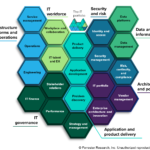 Making informed decisions is crucial for business success. Primary market research serves as a powerful tool to guide your strategies by providing deeper insights into consumer preferences and the overall market landscape.
Making informed decisions is crucial for business success. Primary market research serves as a powerful tool to guide your strategies by providing deeper insights into consumer preferences and the overall market landscape.
Unlike secondary research, which relies on existing data, primary market research gathers original data directly from customers, prospects, or industry participants to offer more tailored and actionable research.
This article draws on insights from The Freedonia Group’s Research Manager Jennifer Christ to explain the differences between primary and secondary market research, various types of primary market research, and the key benefits of primary market research for strategic decision-making.
Primary vs. Secondary Market Research
- Primary market research solicits new information from sources directly, such as customers in a specific target market. Primary research includes in-depth interviews, consumer surveys, and focus groups. This research can provide both quantitative and qualitative insights about specific market segments as well as changing consumer trends, motivations, and purchasing patterns.
- Secondary market research includes previously published information that has been compiled by outside organizations such as government agencies, industry associations, and trade publications. Secondary data can be relatively inexpensive and is often publicly available. However, secondary market research tends to be broad, so if you are interested in a niche market or an emerging technology, you may not be able to find secondary data that is relevant to your needs.
Key Benefits of Primary Market Research
More Targeted Data
Secondary research provides a solid foundation for understanding a market at a high level, but primary research can help fill in the gaps and offer a richer, more nuanced perspective, according to Jennifer.
By engaging directly with industry participants through in-depth interviews, for example, primary research allows you to validate market size estimates and growth outlooks and gain detailed insights into specific industry developments or drivers.
“It’s important to evaluate a market from multiple angles, and primary research enables you to explore other viewpoints that might get less coverage in industry, business, or the general media,” Jennifer explains. “It also lets you ask questions and learn about trends and issues that might not be mentioned in other sources.”
Primary data and analysis can give you a more complete view of the market to ensure you are not missing key pieces of information that could impact your strategy.
Unbiased View of the Market
In addition, primary market research allows you to see beyond the hype and get a reality check on hot trends. “For instance, a supplier of an innovation or technology may think it’s going to be market changing, but by interviewing potential end users, we might learn that end users are satisfied with what they are using, the new tech doesn’t solve an existing problem, or they think the cost to change outweighs potential benefits, so they are far less enthused,” Jennifer says.
By providing unbiased information directly from the source, primary research can help companies make smart investments and understand the potential implications of disruptive technologies and trends more clearly.
Deeper Consumer Insights
Primary research based on consumer survey data can also shed light on consumer attitudes, their decision-making process, and the reasons why they make certain purchases. Analysts can break down this survey data based on demographic information such as age, region, gender, income levels, family size, living situation, whether they work from home, and other relevant attributes, so you can understand different target consumers on a more granular level.
Using survey data to understand different types of consumers and the motivations that drive them can help companies build more effective marketing and product development strategies.
Understanding Primary Market Research Methods
Primary research can be conducted through a variety of methods, but these approaches often require a high level of expertise to produce accurate, meaningful results. Here are some tips and best practices to keep in mind when conducting consumer surveys or in-depth interviews with industry participants.
Consumer Surveys
Consumer survey data can be gathered through online and booklet-based surveys. It’s important to screen for quality and use an appropriate sample size that is representative of the overall target population. Once the data is collected, the information must be put into context and evaluated based on historical trends and other key factors.
Experienced market research analysts can help you gather the data and interpret it correctly. You may want to consider working with a third-party market research firm if you do not have this expertise in-house, or if your research team has limited bandwidth.
In-Depth Interviews
Individual or group interviews can unearth valuable information that you can’t find anywhere else, but there is an art and a science to this research method as well.
To conduct interviews with industry participants, you need a strong network of contacts within specific industry sectors, such as end-users, manufacturers, retailers and distributors, or material suppliers. It’s also a good idea to speak with up-and-coming participants, as well as established players and market leaders, according to Jennifer.
To gather relevant information, you will need to engage the right people within these organizations. Depending on your goals, you may want to target:
- Managers or VPs who work in marketing or sales who are aware of a company’s performance, pain points, and positioning in the industry
- Internal insights or customer analysis team who understand the ins and outs of the industry
- People working in research and development who can answer more technical questions
To engage busy senior-level managers in primary research, it’s also crucial to build strong rapport and strive for a mutually beneficial conversation. “I like to keep it as conversational as much as possible,” Jennifer says. “Not only are people more comfortable in that mode, but it is more likely to bring up things I might not have thought of. Also, I think it’s important for the person I’m talking to to feel like they learned something from our chat as well. They are more likely to think that talking with us is worth their valuable time.”
Working with a reputable third-party market research firm can open doors and allow you to gather valuable insights from industry leaders and companies you may be unable to reach or engage on your own.
Turn to the Experts
There’s no doubt primary market research involves extra legwork, skill, and dedication, but it also provides a “boots on the ground” level of industry knowledge that’s difficult to achieve through any other approach.
If you need primary market research services, don’t hesitate to speak to a research specialist at MarketResearch.com. With more than 20 years of experience in the market research industry, MarketResearch.com is the go-to source for both secondary and primary research. Our knowledgeable team can point you in the right direction and help you obtain the information you need, whether that’s in the form of a syndicated market research or a custom market research project.
Contact MarketResearch.com’s research specialists at customerservice@marketresearch.com or call 800.298.5699 (U.S.) or +1.240.747.3004 (international).









